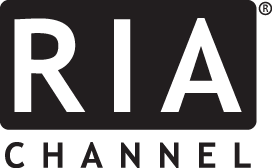Tim Leary, Senior Portfolio Manager for the BlueBay Fixed Income Team at RBC Global Asset Management, joined Keith Black, Managing Director of RIA Channel, to discuss the inner workings of the bond and loan markets.
The US high-yield bond market and leveraged loan markets are of similar size but differ in many respects. Bonds are more liquid and settle in two days. Bonds with fixed coupons experience increasing prices when interest rates fall and declining prices when interest rates rise. Bonds with longer duration will experience greater price changes for a given change in interest rates.
Leveraged loans, whether broadly syndicated or originated and held by private debt funds, predominately have floating interest rates, which leads to lower price volatility and interest rate sensitivity. Leveraged loans have outperformed fixed-rate bonds in the rising rate environment experienced in 2022-2023. Leveraged loans are less liquid than bonds, and settle in seven trading days with required documentation. Broadly syndicated loans are originated by an investment bank and sold to mutual funds and investors in Collateralized Loan Obligations (CLOs). CLOs are ratings-sensitive and may hesitate to buy loans once they have been downgraded below a specific credit rating. If CLOs slow buying of loans, liquidity can dry up, as 70% of the loan market has recently been held by CLOs.
Private debt loans are originated by the asset manager and have little disclosure to the broader markets. It is harder to research private debt investments, as issuers like to keep their financial information private. Most private loans are illiquid and held to maturity. Investors wishing to receive liquidity from private debt funds may need to wait to redeem at a quarterly redemption interval.
There has been substantial growth in the leveraged loan and private debt market, with private debt now reaching $1 trillion in assets, approximately four times the 2017 level. The number of borrowers accessing debt markets exclusively through loans rather than bonds has grown by over 125% over the last ten years.
Loans outperformed bonds as the Fed tightened rates in 2022 and 2023. During this period, high yield experienced net outflows of $80 billion, while private debt, BDCs, and floating-rate notes experienced inflows of $150 billion.
As the Fed nears the end of its tightening cycle and looks to potentially cut rates in 2024, Leary favors moving back to the higher quality, higher rating, more liquid bond market. While the majority of high-yield bonds are rated BB, the majority of leveraged loans are rated B. Investors may wish to move money from private credit or equities into high-yield bonds, as holding long-duration fixed-rate bonds can benefit when the Fed starts to cut rates. Investors concerned about liquidity and fees may also find the high-yield market attractive relative to direct lending strategies.
Resources:

